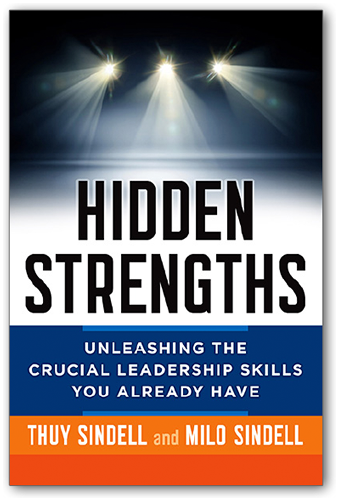Hidden Strengths – Unleashing The Leadership Skills You Already Have
Tanmay Vora

Most people ascend to leadership positions based on their areas of natural strengths. Tools like SWOT analysis also focus excessively on two things: strengths and weaknesses. So, our natural response as leaders is to leverage our strengths and improve on areas of our weakness. Yes?
But there is a large space between our strengths and weaknesses that which is hidden. Authors Thuy Sindell and Milo Sindell calls this space as “Hidden Strengths” in their new book by the same name. About 70% of our skills fall in this hidden space where we are neither excelling nor failing. And according to authors, our focusing on our hidden strengths provide a very fertile ground for our leadership and professional growth.
The book points to research which states that,
“Effective leaders evolve and grow throughout their careers, whereas failed leaders get stuck in a pattern of overusing their strength to the point of staleness.”
After a while, overusing our strengths may just turn out to be one of our weaknesses. And therefore, it is vital to first know the hidden strengths and then work to develop in those areas.
Our natural strengths are an intersection between our talents, knowledge and skills. However, the possibility of having natural strengths is only to an extent of 20%, i.e. your top 20% of skills. For rest of the skills there are missing pieces.
This book can be your effective guide in identifying those missing pieces. To do that, this book provides an overview of 28 skill areas that are divided into four categories:
-
Leading Self: How aware are you of your skills and limitations? How strong is your ability to self-regulate?
-
Leading Others: How do you interact with others in the organization?
-
Leading the Organization: To what extent do you think about the direction of the organization and how you function within it?
-
Leading Implementation: How are you ensuring that things get done?
Knowing that constant learning is our biggest competitive advantage in a rapidly changing world, we all try hard to develop our skills in areas we think we need to improve. But having a handy guide like this book can provide a definite direction to your self-development efforts.
This is a compact 80 page book that is not preachy in its tone, doesn’t offer any quick fix models but just outlines the premise, key skills and why they are important. Free online profiling of hidden strengths that comes with this book also complements for brevity in content.
Whether you are a leader looking for improving your skills further or an aspiring leader, this book will offer useful insights into some of the key skills that contribute to great leadership.